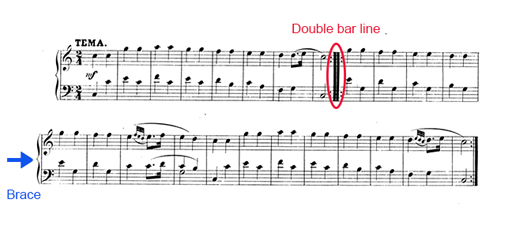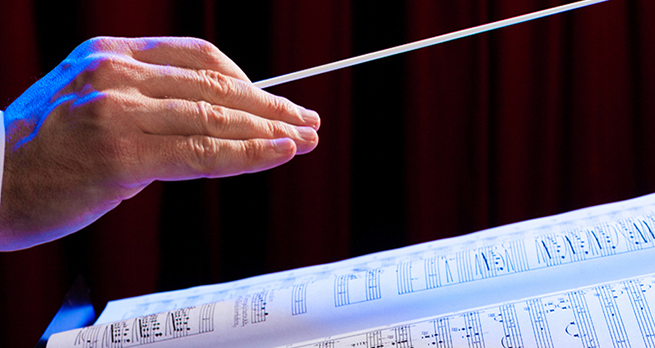2.1.1 Getting started with piano scores
A piano score will always have two lines of music, one for the right hand and one for the left, and generally uses the treble clef for the right hand and bass clef for the left. When following a piece of music that has more than one line, remember that the staves that are played together are joined by a brace that looks like a curly bracket. The notes that sound simultaneously will line up vertically on the staves contained by the brace.

Before you move on, you need to be able to identify some other important signs in the notation – first, the double bar line and second, the repeat mark. If you look at the score right from the beginning, you will see that the first line of music is separated in the middle by two thicker bar lines. There is a similar sign at the end of the second line of music. These are called double bar lines and they are used to indicate the end of a piece of music or the end of a section. Here, they also have two dots placed on either side of the middle line of the staff. This is called a repeat mark and indicates that the player must go back to the beginning or to the previous double bar and play it again. Double bars and repeat marks are important ‘landmarks’ to look out for in a score as they will help your orientation. You may remember from last week, that repetition is important in creating structure in melodies, but also it is an important element in creating larger structures. Knowing how repetition works will help your understanding of a score.
